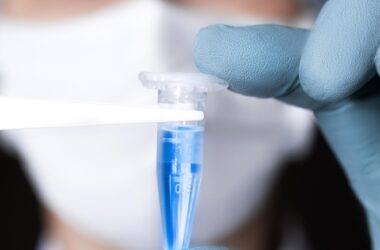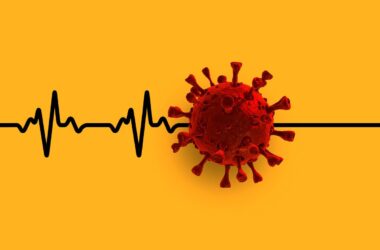
Image microscopique à haute résolution d’un piège extracellulaire à neutrophiles (NET). Les neutrophiles (en vert) sont des globules blancs qui aident le système immunitaire à combattre les envahisseurs. Les neutrophiles peuvent se suicider et déverser de l’ADN et des signaux chimiques dans un réseau collant de filaments (de couleur jaune). Ces réseaux ou NETs peuvent recruter d’autres neutrophiles. Un excès de neutrophiles peut entraîner des lésions tissulaires. Crédit : Jose M. Adrover/Laboratoire Egeblad/CSHL, 2022
Une équipe de scientifiques dirigée par le Cold Spring Harbor Laboratory (CSHL) a découvert que le disulfirame, un médicament approuvé par la FDA, empêche le système immunitaire de produire des toiles toxiques appelées pièges extracellulaires des neutrophiles (NET). De nombreux scientifiques soupçonnent les NET de contribuer au développement du syndrome de détresse respiratoire aiguë (SDRA) chez les patients atteints de COVID-19 and other life-threatening lung injuries.
Jose M. Adrover, a postdoctoral fellow in CSHL Professor Mikala Egeblad’s lab, explains that NETs are usually released during infections when immune cells, called neutrophils, confront a threat that is too large for the tiny cells to battle directly. To extend their reach, neutrophils spew a sticky web of DNA and toxins, which indiscriminately poisons pathogens and the body’s own cells. “They will damage everything, all around,” Adrover says.
Because NETs can be so destructive, researchers in Egeblad’s lab have been searching for ways to block their formation. Disulfiram, which has been used since the 1950s as a treatment for alcohol use disorders, was a promising candidate. “Disulfiram interferes with gasdermin D, a molecule needed to produce NETs”, says Juliane Daßler-Plenker, a postdoctoral fellow in Egeblad’s lab.
The team that included Weill Cornell Medicine (WCM), and Icahn School of Medicine at Mount Sinai (Mt. Sinai) investigated disulfiram’s effects on NET production. They found that the drug prevents neutrophils isolated from blood from generating NETs. Then, they gave disulfiram to mice with acute lung injuries: “By computerized tomography [CT scan]nous avons constaté une forte réduction des œdèmes. [fluid] dans les poumons, et le médicament a considérablement amélioré la survie”, explique Scott Lyons, responsable de l’imagerie animale au CSHL. L’équipe de Robert Schwartz (WCM) et celle de Benjamin tenOever (Mt. Sinai) ont testé le disulfiram chez des hamsters infectés par le SARS-CoV-2 virus; NET production was blocked and lung injury was reduced.
Disulfiram is the first FDA-approved drug that can block NET formation. In this study, Egeblad’s team dissects the drug’s ability to block NETs and change immune signaling in a way that may be beneficial for treating severe COVID-19. Their results are reported in JCI Insight.
Clinical trials investigating disulfiram’s use in patients with symptomatic COVID-19 are underway, and while CSHL scientists are not involved in those studies, Egeblad says, “Our findings provide a reason to hope that disulfiram may be a useful treatment. We will continue exploring the drug’s potential in a variety of conditions. Just as important, we now have a tool to help us study the complex roles of NETs in lung injury, cancer, and other diseases that involve NETs.”
Reference: “Disulfiram inhibits neutrophil extracellular trap formation protecting rodents from acute lung injury and SARS-CoV-2 infection” 8 February 2022, JCI Insight.
DOI: 10.1172/jci.insight.157342
Funding: Dr. Marcia Kramer Mayer, William C. and Joyce C. O’Neil Charitable Trust, CSHL Cancer Center, NIH/National Institute of General Medical Sciences, NIH/National Cancer Institute, NIH/National Institute of Diabetes and Digestive and Kidney Diseases, Department of Medicine, Weill Cornell Medicine, Irma Hirschl Trust Research Award.



